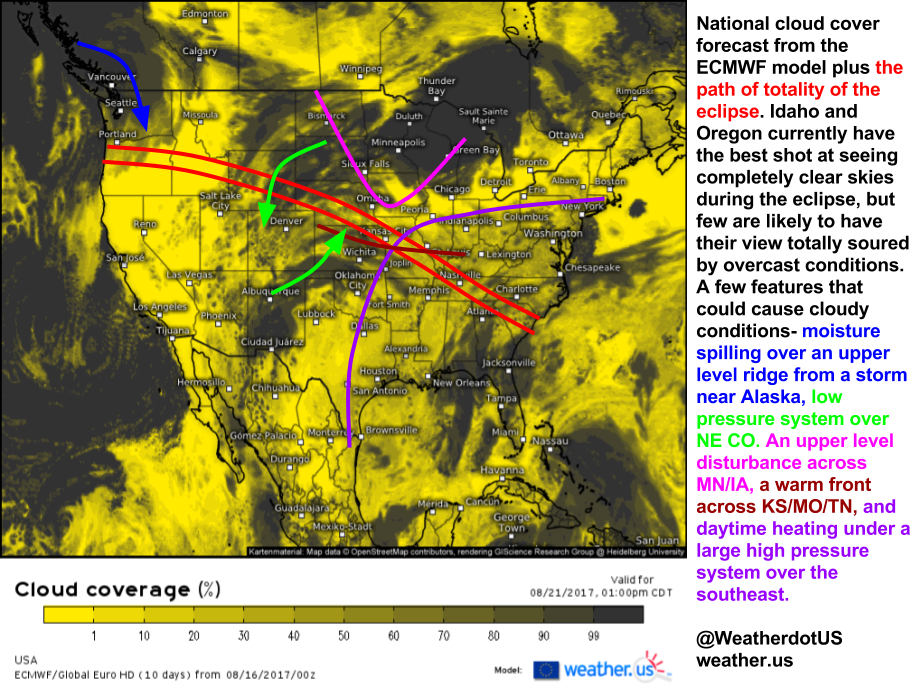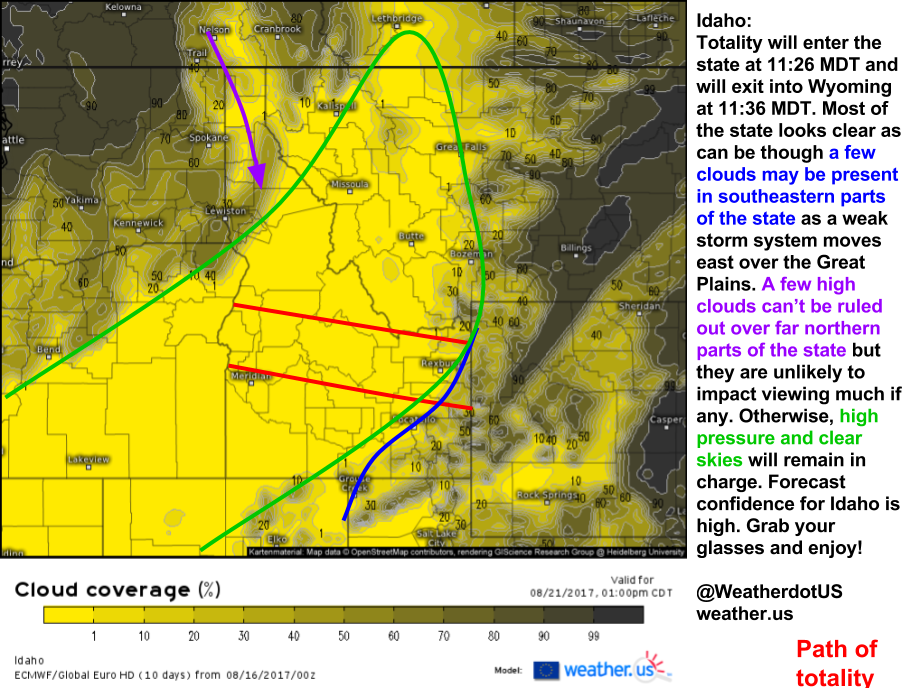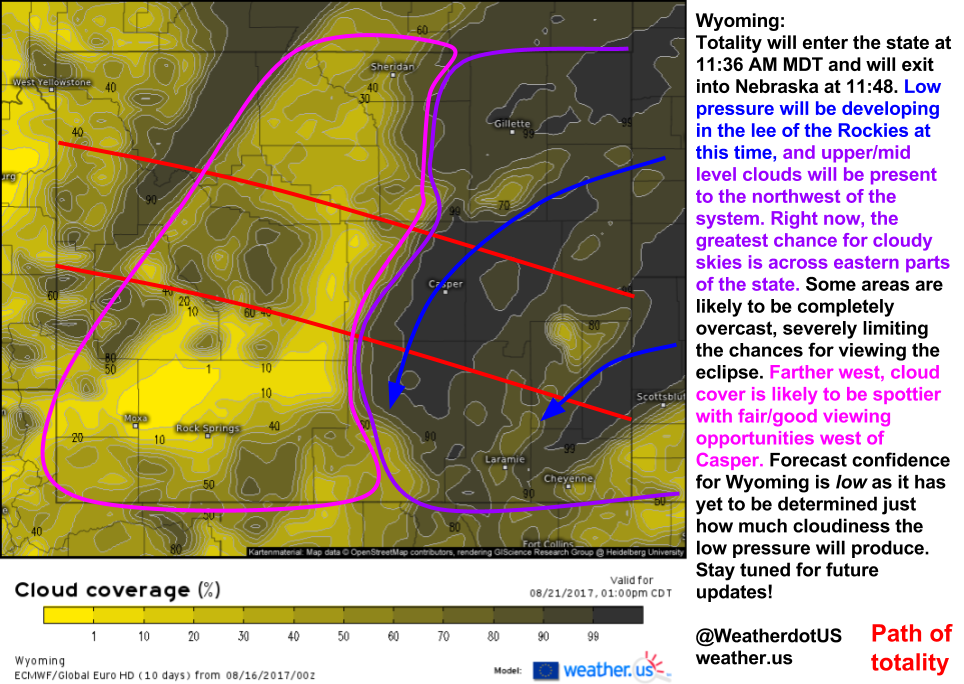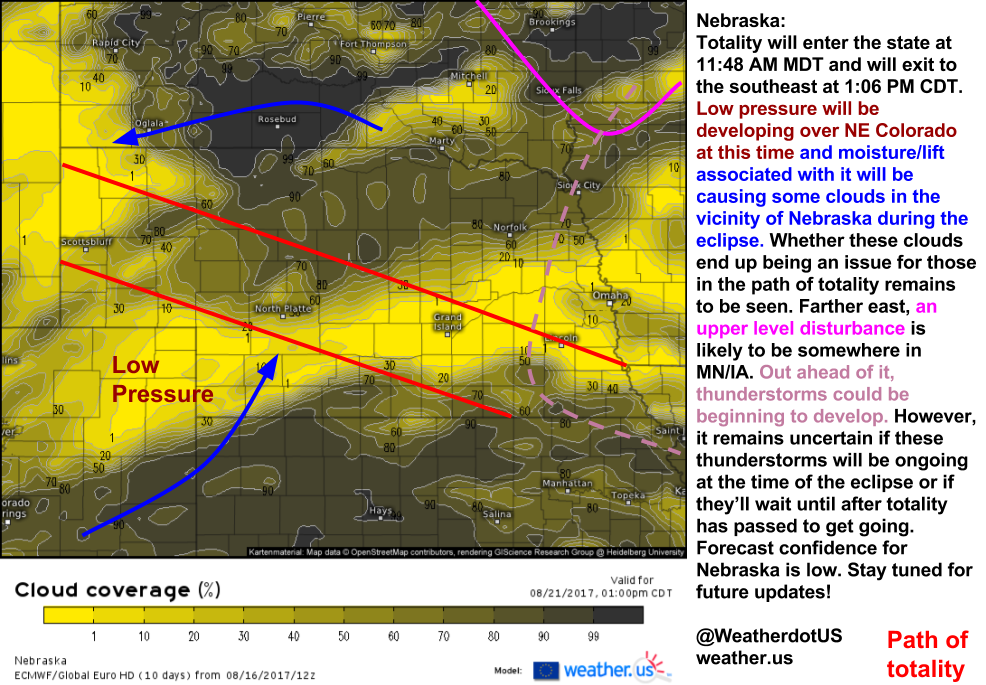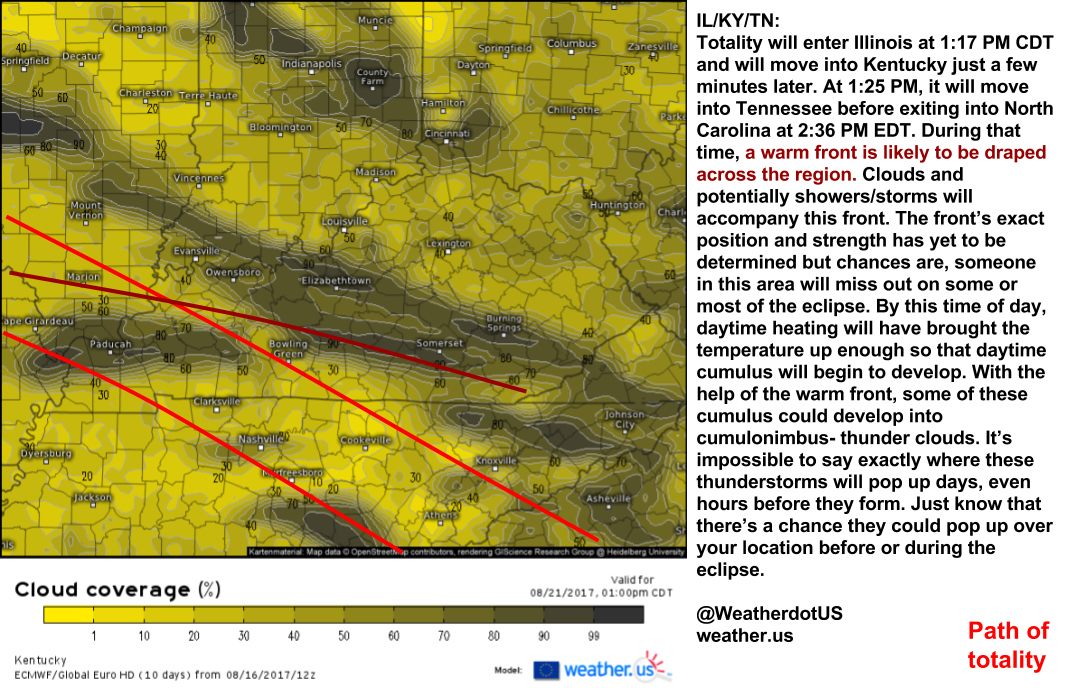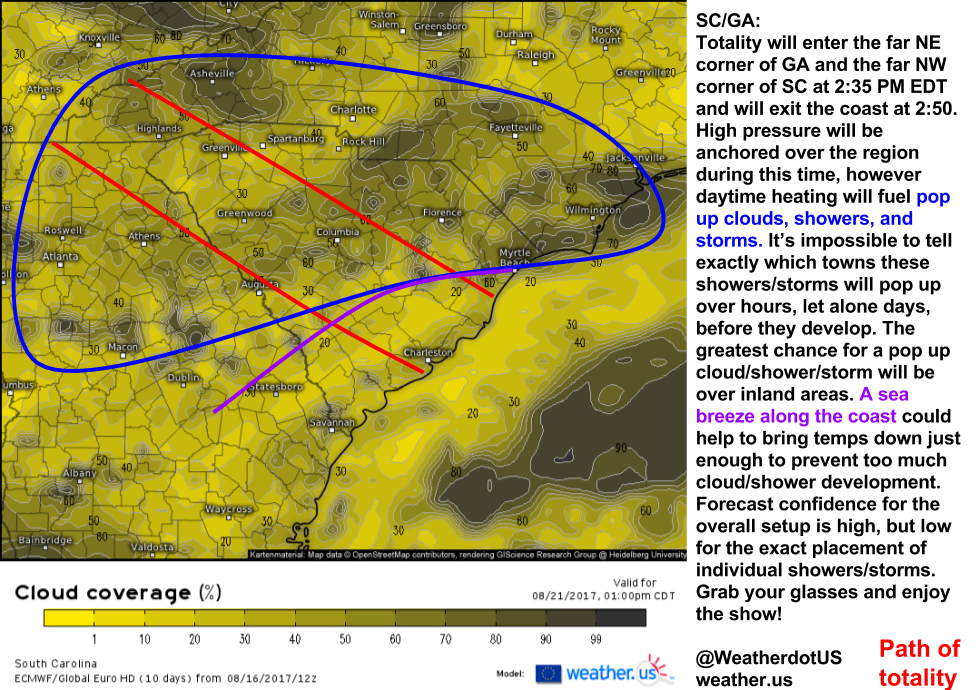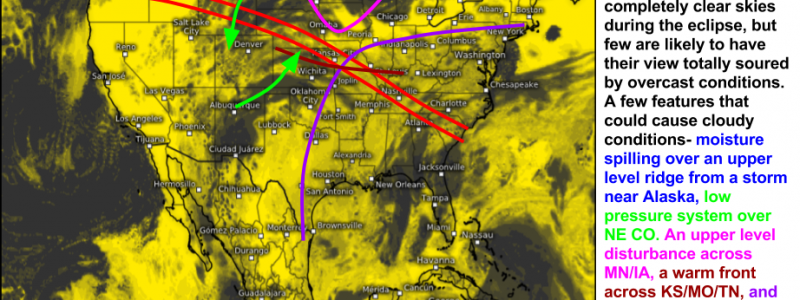
Eclipse 2017 Cloud Cover Forecast
Hello everyone!
An unusual and very special atmospheric event is slated to occur on Monday- a total solar eclipse. The path of totality (where the sun is completely obscured by the moon) will travel through the heart of the country, from the Oregon coast, through the Great Plains, and down to South Carolina. While only the lucky few in the path of totality (plus those traveling to get there) will get to experience the magic of a total solar eclipse, everyone in the US will see at least a partial solar eclipse where part, but not all, of the sun is behind the moon. For more information on the astronomy behind eclipses, and how to view them safely, check out NASA’s eclipse information page. This post will focus on the weather for the eclipse. I’ll try to focus on the main thing everyone wants to know- is my view of the eclipse going to be blocked by clouds?
Here’s an overview of the national cloud cover forecast provided by the ECMWF model. While some changes/refinements to the forecast are to be expected in the next few days, I think it has the major features pretty well pinned down.
High pressure is expected to be in place across the western Rockies as the eclipse first hits shore in Oregon and travels east at just over 1,000 miles per hour. Some clouds spilling over an upper level ridge in the area could partially obscure the view in areas such as Seattle, but the majority of the West Coast will enjoy clear skies for the event as marine stratus/fog remains more or less offshore. A weak low pressure system developing just east of the Rockies will bring some clouds to parts of Wyoming, Colorado, and the Western Great Plains. An upper level disturbance, meanwhile, could touch off thunderstorms over the northern/eastern Plains that could obscure the view there (and potentially create some awesome eclipse/thunderstorm photo-op’s).
As the moon’s shadow races southeast towards the Atlantic, it will be getting later in the day and the sun’s rays will have had plenty of time to heat up the atmosphere over the Appalachian mountains and along the East Coast. Typical daytime heating driven showers/storms are expected to pop up in this area as the eclipse moves through. Where exactly a particular storm will pop up is impossible to determine hours, let alone days, before the event. So while one town may get a rain shower to develop just as the eclipse passes overhead, the next town over may get a perfectly clear view. Unfortunately, it’s more or less a roll of the dice which side you’re on.
I have created graphics with more detailed information about the cloud forecast in the states/regions where the path of totality is expected to pass overhead. I’ll update these graphics if need be in the days ahead. You don’t have to wait for me though! All the information here is available for free over at weather.us including the ECMWF’s cloud forecast.
A total solar eclipse is an amazing experience if you’re lucky enough to be able to experience it! The sun’s rays can be very damaging though, the only time it’s safe to look directly at the sun is during totality. During the partial solar eclipse phases, even when the sun is 99.9% covered, you must observe the sun through approved glasses or indirectly, through a pinhole projector or similar device. As I mentioned before, NASA’s eclipse website has much more information on how the eclipse works, and how to view it safely.
I’ll have more updates on the eclipse forecast in the coming days both here, and on twitter where you can follow @WeatherdotUS for more forecasts and analysis.
-Jack Sillin
